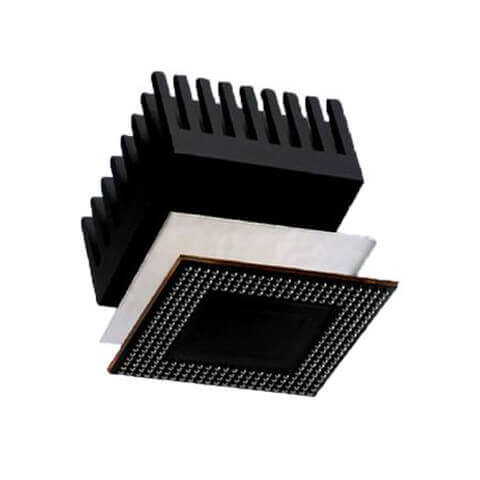So sortieren und wählen Sie elektronischen Klebstoff
xinst01. Juni 2020
Elektronische Klebstoffe sind eine wichtige Klassifizierung von Klebstoffen, die hauptsächlich zum Versiegeln, Kleben, Vergießen, Beschichten, Strukturieren, für gleichzeitig vorhandene Folien und SMT-Patches von elektronischen und elektrischen Bauteilen verwendet werden. Wie klassifizieren sich elektronische Klebstoffe? Wie sollen wir verschiedene elektronische Klebstoffe wählen?

1. Klassifizierung von elektronischen Klebstoffen
Electronic adhesives for microelectronic packaging can be divided into two categories: semiconductor IC packaging adhesives and PCB board-level assembly adhesives according to the packaging form. Adhesives for semiconductor IC packaging include epoxy molding compound (EMC), LED encapsulating glue (LED Encapsulant), die glue (Die Attach Adhesives), flip chip underfills (Flip Chip Underfills), cofferdams and fillers (Dam and Fill Encapsulant). PCB board-level assembly adhesives include: SMT Adhesives, COB Encapsulant, FPC Reinforcement Adhesives, CSP / BGA Underfills, camera module Image Sensor Assembly Adhesives, conformal coating, and thermally conductive adhesive.
Electronic adhesives can be divided into thermal curing, UV curing, anaerobic curing, moisture curing, UV curing + thermal curing, UV curing + moisture curing and so on. According to the material system, it can be divided into epoxy resins, acrylates and others.
Adhesives commonly used in electronic manufacturing include epoxy resin, UV (ultraviolet) glue, hot-melt adhesive, solder paste, anaerobic adhesive, double-group adhesive, etc. Epoxy resins are generally cured at high temperature, and the bonding force after curing is large. It is widely used in the bonding of functional devices, underfill and other processes. In the electronics manufacturing industry, the manufacturers of epoxy adhesives include Loctite, a subsidiary of Henkel, Fuji, Japan, Huahai Chengke, Huitian, etc. UV glue is cured by ultraviolet light, its pollution is small, and it cures quickly. It is the most widely used in some fields such as encapsulated dispensing and surface dispensing. Currently, UV glue manufacturers include Henkel Loctite, Xinyou, Debon, Huahai Chengke, Hestic Wait. In the chip packaging, the bonding power, thermal conductivity, thermal resistance and other requirements of the glue for the glue are all required. In the chip packaging, especially the LED chip packaging, the US Dow Corning glue is the most widely used. Changxin, Debang, Xindongbang and other companies are also investing in the development and production of special chip fixing glue to replace foreign products. Hot melt adhesives are structural PUR glues, which have the characteristics of low-temperature natural water vapor curing, fast curing, non-toxic and non-polluting. Due to their unique advantages, they are gradually replacing other types of glue. xinst etc.
2. Factors to be considered when choosing adhesives
Important properties of adhesives include rheological properties (viscosity, thixotropy, collapse resistance and tailing, storage period / condition and effective life) and mechanical properties (viscosity, mechanical strength and heat resistance, curing cycle, electrical properties) Stability, etc.).
(1) When choosing an adhesive, first ensure compliance with environmental protection requirements, and then consider the performance of the adhesive in three aspects: pre-curing performance, curing performance, and post-curing performance.
(2) Because the two-component adhesive needs to be mixed to the proper ratio at the right time, which increases the difficulty of the process, the single-component system should be preferred.
(3) It is better to choose a colored adhesive that is easy to distinguish from green oil and circuit board materials, because you can quickly find out whether there are missing parts, the amount of glue, whether the pads / components, empty glue, etc., are easy to control the process; Red, white and yellow.
(4) The adhesive should have sufficient viscosity and humidity to ensure that the components and circuit board are firmly bonded before the adhesive is cured. Both usually increase with viscosity. Highly viscous materials prevent components from moving during circuit board placement and transfer.
(5) For the printing process, the adhesive should have good collapse resistance after coating to ensure good contact between the components and the circuit board. This is especially important for components with large supporting heights such as SOIC and chip carriers. Adhesives with good thixotropy usually have a viscosity range of 60 to 500 Pa · s. High thixotropy helps to ensure good printability and consistent stencil printing quality.
(6) For the printing process, the adhesive should be able to be exposed to the air for a long time and is not sensitive to temperature and humidity. For example, some new adhesives have a printing life of more than 5 days, and the remaining adhesives in the printing process The material is stored in a container and can be used again.
(7) Klebstoffe, die in relativ kurzer Zeit und bei niedriger Temperatur eine angemessene Verbindungsfestigkeit erreichen können, sollten bevorzugt werden. Die Aushärtungszeit und Aushärtungstemperatur besserer Klebstoffe beträgt im Allgemeinen 30-40 s, 120-130 ° C. Die Festigkeit vor und nach dem Löten sollte ausreichen, um sicherzustellen, dass die Komponenten fest verbunden sind, eine gute Wärmebeständigkeit aufweisen und eine ausreichende Haftung aufweisen, um dem Schereffekt der Lötwelle standzuhalten. Die Temperatur sollte niedriger sein als die Temperatur, bei der das Substrat und die Komponenten der Leiterplatte beschädigt werden können, und normalerweise niedriger als die Glasübergangstemperatur des Substrats. Diese Temperatur beträgt vorzugsweise 75 bis 95 ° C. Wenn die Verbindungsstärke zu groß ist, ist die Reparatur schwierig, aber wenn sie zu klein ist, wird sie nicht repariert.
Die Arten und Auswahlmöglichkeiten von elektronischen Klebstoffen sind wie oben. Sie können unterschiedliche Eigenschaften von elektronischen Klebstoffen je nach Situation und Bedarf auswählen, damit sie ihre größte Rolle spielen.
Zurück: Was ist Faserband?
Nächster : Acht Eigenschaften von DuPont Nomex-Isolierpapier


